There are great filmmakers; there are filmmakers that define the zeitgeist of their times; there are some who are rediscovered with time; and, then there are a few who become synonymous with a particular era. Nestled somewhere in between these bookends lie filmmakers like Saawan Kumar Tak, who might not get cinephiles talking animatedly or have a dedicated fan base but remain significant thanks to their work that remains unforgettable. [caption id=“attachment_11123641” align=“alignnone” width=“640”]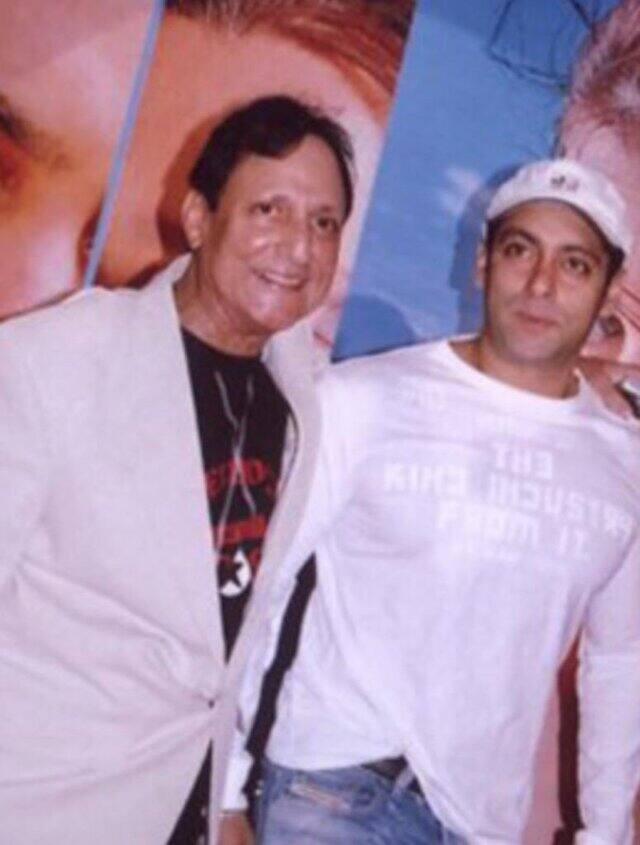 Saawan Kumar Tak with actor Salman Khan. Twitter/@BeingSalmanKhan[/caption] Tak started his career as a producer; he was the one to have suggested the screen name ‘Sanjeev Kumar’ to Hari Jariwala during the making of Naunihal (1967) and made his debut as a director with Gomti Ki Kinare (1972), the final film of screen legend Meena Kumar. Like the all-time greats of the era, including Raj Kapoor, Manoj Kumar and later Dev Anand, Saawan Kumar Tak was an all-rounder. He wrote, produced and directed and was a prolific lyricist with some of the most popular songs of the 1970s, 1980s, 1990s, and 2000s to his credit. He was also the only mainstream filmmaker to consistently use a woman composer, Usha Khanna, throughout his career. [caption id=“attachment_11123681” align=“alignnone” width=“640”]
Saawan Kumar Tak with actor Salman Khan. Twitter/@BeingSalmanKhan[/caption] Tak started his career as a producer; he was the one to have suggested the screen name ‘Sanjeev Kumar’ to Hari Jariwala during the making of Naunihal (1967) and made his debut as a director with Gomti Ki Kinare (1972), the final film of screen legend Meena Kumar. Like the all-time greats of the era, including Raj Kapoor, Manoj Kumar and later Dev Anand, Saawan Kumar Tak was an all-rounder. He wrote, produced and directed and was a prolific lyricist with some of the most popular songs of the 1970s, 1980s, 1990s, and 2000s to his credit. He was also the only mainstream filmmaker to consistently use a woman composer, Usha Khanna, throughout his career. [caption id=“attachment_11123681” align=“alignnone” width=“640”]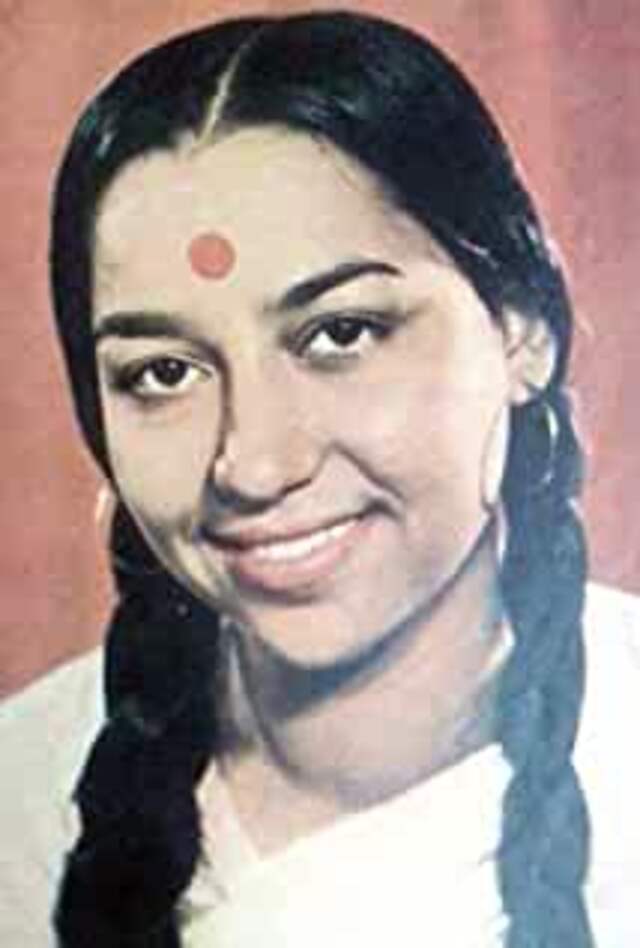 File image of Usha Khanna. Imdb.com[/caption] Tak’s death at 86 due to failing health saw fans, and followers of Hindi films recall his fascinating body of work that includes, amongst other things, two iconic hits that ended up redefining the careers of two box office phenomena across different eras — Rajesh Khanna and Salman Khan. Born in Jaipur, British India, Tak was a bridge that connected different eras of the Bombay film industry. He was a throwback to the likes of GP Sippy and J Om Prakash, who started as producers and at the same time seemed to be following the footsteps of Raj Kapoor and Manoj Kumar, who were great at multi-functionality. Tak was also amongst the young generation of writers-filmmakers who connected at a different level with a living legend like Meena Kumari. Tak and Gulzar found Meena Kumari to be a keen listener and ardent admirer of their poetry. They spent a great deal of time with the ailing diva and, along with Dharmendra, were considered to be the closest to Meena Kumari during her last days. It’s interesting how both Gulzar and Tak in their debut films — Mere Apne (1971) and Gomti Ke Kinare — created two of the best characters portrayed by Meena Kumari in her later years. [caption id=“attachment_11123751” align=“alignnone” width=“640”]
File image of Usha Khanna. Imdb.com[/caption] Tak’s death at 86 due to failing health saw fans, and followers of Hindi films recall his fascinating body of work that includes, amongst other things, two iconic hits that ended up redefining the careers of two box office phenomena across different eras — Rajesh Khanna and Salman Khan. Born in Jaipur, British India, Tak was a bridge that connected different eras of the Bombay film industry. He was a throwback to the likes of GP Sippy and J Om Prakash, who started as producers and at the same time seemed to be following the footsteps of Raj Kapoor and Manoj Kumar, who were great at multi-functionality. Tak was also amongst the young generation of writers-filmmakers who connected at a different level with a living legend like Meena Kumari. Tak and Gulzar found Meena Kumari to be a keen listener and ardent admirer of their poetry. They spent a great deal of time with the ailing diva and, along with Dharmendra, were considered to be the closest to Meena Kumari during her last days. It’s interesting how both Gulzar and Tak in their debut films — Mere Apne (1971) and Gomti Ke Kinare — created two of the best characters portrayed by Meena Kumari in her later years. [caption id=“attachment_11123751” align=“alignnone” width=“640”]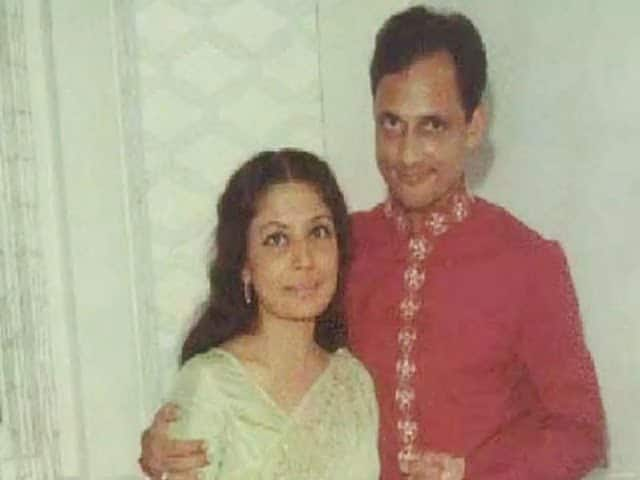 Saawan Kumar Tak with Meena Kumari. Image courtesy: filmfare.com[/caption] During the 1970s, Tak’s career chose a different path from that of Gulzar’s and even the industry weighed them differently. While Gulzar was celebrated and lauded for his poetry, Tak would constantly be accused of passing Meena Kumari’s unpublished works as his writing. Tak often joked that anyone who could imagine Meena Kumari writing ‘Mummy ne meri tumhe chai par bulaya hai’ from Souten (1983) would probably need to examine their heads. Tak focused on making so-called ‘women-centric’ films like Saajan Bina Suhagan (1978) and Saajan Ki Saheli (1981) in an era dominated by Amitabh Bachchan’s Angry Young Man films. The two came close to working together when Tak considered the then up-and-coming Bachchan for Gomti Ke Kinare. Still, legend has it that the leading lady Mumtaz put her weight behind Sameer Khan, the younger brother of Feroz and Sanjay. Operating within the parameters of popular Hindi films, Tak was as successful and popular as one could be, but despite hits, his films and cinema was never considered A-list. It was in the 1980s that Tak found the element that would forever define his filmmaking and elevate him to cult status. Tak had been planning to make a film with Rajesh Khanna for almost a decade, but the star couldn’t find dates, and then one fine day, the latter called the former and said, ‘‘Diary khali hai. Jo dates chahe likh lo.” The voice sounded familiar but Tak took a while to identify, and by this time, Khanna laughingly added that he was sitting idle at home. In true Hindi filmmaker style, Tak told him, ‘Main aa jata hoon phir. Mehfil saja denge.’ Souten faced a fair share of troubles before hitting the screens — Parveen Babi walked out at the eleventh hour, forcing Tak to cast a relatively unknown Tina Munim, who happened to live in the same building; midway Khanna felt that he had precious little to do in the Krishna-Radha-Rukmini triangle and wanted his character to get hero-like dialogues in the end, and much more. In the end, Tak’s vision prevailed. [caption id=“attachment_11123781” align=“alignnone” width=“640”]
Saawan Kumar Tak with Meena Kumari. Image courtesy: filmfare.com[/caption] During the 1970s, Tak’s career chose a different path from that of Gulzar’s and even the industry weighed them differently. While Gulzar was celebrated and lauded for his poetry, Tak would constantly be accused of passing Meena Kumari’s unpublished works as his writing. Tak often joked that anyone who could imagine Meena Kumari writing ‘Mummy ne meri tumhe chai par bulaya hai’ from Souten (1983) would probably need to examine their heads. Tak focused on making so-called ‘women-centric’ films like Saajan Bina Suhagan (1978) and Saajan Ki Saheli (1981) in an era dominated by Amitabh Bachchan’s Angry Young Man films. The two came close to working together when Tak considered the then up-and-coming Bachchan for Gomti Ke Kinare. Still, legend has it that the leading lady Mumtaz put her weight behind Sameer Khan, the younger brother of Feroz and Sanjay. Operating within the parameters of popular Hindi films, Tak was as successful and popular as one could be, but despite hits, his films and cinema was never considered A-list. It was in the 1980s that Tak found the element that would forever define his filmmaking and elevate him to cult status. Tak had been planning to make a film with Rajesh Khanna for almost a decade, but the star couldn’t find dates, and then one fine day, the latter called the former and said, ‘‘Diary khali hai. Jo dates chahe likh lo.” The voice sounded familiar but Tak took a while to identify, and by this time, Khanna laughingly added that he was sitting idle at home. In true Hindi filmmaker style, Tak told him, ‘Main aa jata hoon phir. Mehfil saja denge.’ Souten faced a fair share of troubles before hitting the screens — Parveen Babi walked out at the eleventh hour, forcing Tak to cast a relatively unknown Tina Munim, who happened to live in the same building; midway Khanna felt that he had precious little to do in the Krishna-Radha-Rukmini triangle and wanted his character to get hero-like dialogues in the end, and much more. In the end, Tak’s vision prevailed. [caption id=“attachment_11123781” align=“alignnone” width=“640”]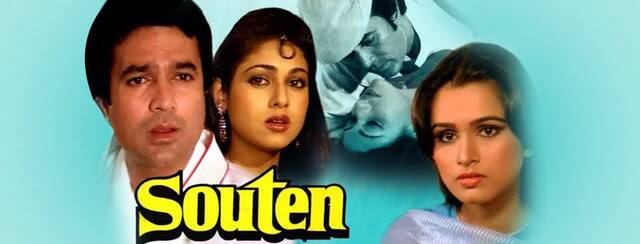 Poster for Souten. Facbook/ @SoutenMovie[/caption] The success of Souten started the buzz about Khanna’s return to form. Tak decided to cast the winning pair of Rajesh Khanna and Tina Munim, who had become a couple in real life, for Souten Ki Beti (1989). Tak had no clue that there was trouble in paradise and later learned that Khanna never shared how he and his paramour were on the verge of splitting in the hope that shooting together would revive things. Tak reshot the film with Jeetendra and Rekha after Khanna-Munim split. Tak’s films were formulaic and operated in their own universe. Watching films like Souten, or Laila (1984) that featured Anil Kapoor, Anita Raj, Sunil Dutt and Pran, the viewer was transported into a world that was practically unrecognisable in terms of geography. On some level, Tak’s cosmos was a variation of the landscape of the Muslim social, and in a period where realism had seeped into even the most escapist of the genres, the audience still lapped it. Tak’s strange world is most visible in Sanam Bewaffa (1991), a bizarre off-shoot of the Muslim social, which was against the trend. He cast Salman Khan in a role that no one in their right minds could have imagined him, but once again the film became a runaway success. It was Salman Khan’s biggest hit of the era. Tak later courted controversy when he announced Khal-Naaikaa (1993) with Anu Agarwal and was accused by Subhash Ghai of trying to cash in on the buzz generated by his Khalnayak. [caption id=“attachment_11123811” align=“alignnone” width=“640”]
Poster for Souten. Facbook/ @SoutenMovie[/caption] The success of Souten started the buzz about Khanna’s return to form. Tak decided to cast the winning pair of Rajesh Khanna and Tina Munim, who had become a couple in real life, for Souten Ki Beti (1989). Tak had no clue that there was trouble in paradise and later learned that Khanna never shared how he and his paramour were on the verge of splitting in the hope that shooting together would revive things. Tak reshot the film with Jeetendra and Rekha after Khanna-Munim split. Tak’s films were formulaic and operated in their own universe. Watching films like Souten, or Laila (1984) that featured Anil Kapoor, Anita Raj, Sunil Dutt and Pran, the viewer was transported into a world that was practically unrecognisable in terms of geography. On some level, Tak’s cosmos was a variation of the landscape of the Muslim social, and in a period where realism had seeped into even the most escapist of the genres, the audience still lapped it. Tak’s strange world is most visible in Sanam Bewaffa (1991), a bizarre off-shoot of the Muslim social, which was against the trend. He cast Salman Khan in a role that no one in their right minds could have imagined him, but once again the film became a runaway success. It was Salman Khan’s biggest hit of the era. Tak later courted controversy when he announced Khal-Naaikaa (1993) with Anu Agarwal and was accused by Subhash Ghai of trying to cash in on the buzz generated by his Khalnayak. [caption id=“attachment_11123811” align=“alignnone” width=“640”]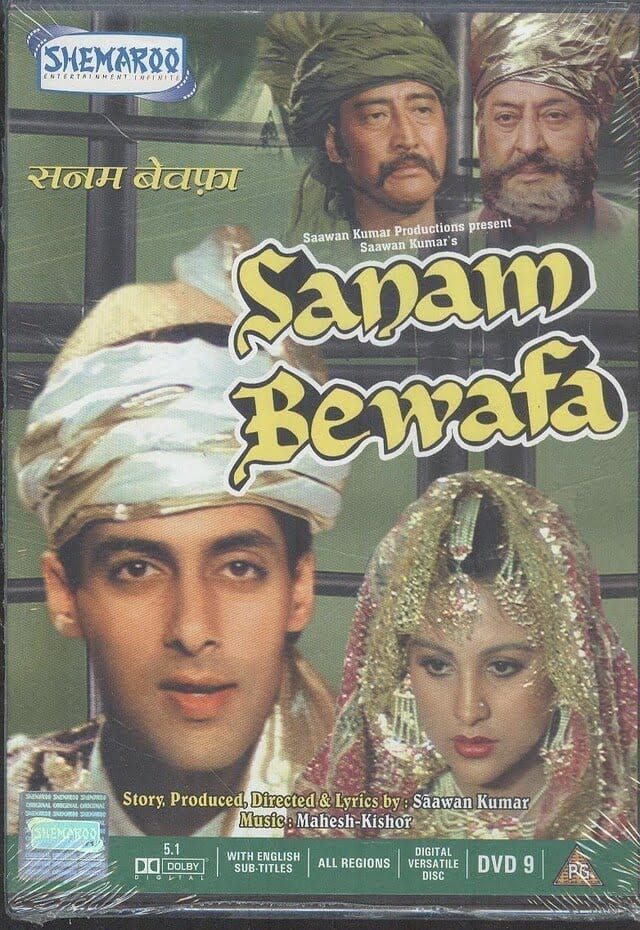 Poster for Sanam Bewaffa (1991). Imdb.com[/caption] Saawan Kumar Tak’s career never attained the same glory as Sanam Bewaffa, irrespective of what he attempted — he made films that tried to evoke the same response from the viewer — sometimes it was the title (Bewaffa Se Waffa, Sanam Harjai), at times it was the sentiment (Salma Pe Dil Aa Gaya), or out of the box casting — Salman Khan and Sridevi in Chaand Ka Tukda. He enjoyed a hit after years, albeit as a lyricist in Kaho Naa… Pyar Hai (2000). In the end, films that connected with the viewer, songs such as ‘Zindagi pyar ka geet hai’ that are hummed even today, giving Usha Khanna a free hand to score and popularising Mauritius as a location where he first shot for Saajan Ki Saheli. The writer is a film historian. Views expressed are personal. Read all the Latest News
, Trending News
, Cricket News
, Bollywood News
, India News
and Entertainment News
here. Follow us on
Facebook
,
Twitter
and
Instagram
.
Poster for Sanam Bewaffa (1991). Imdb.com[/caption] Saawan Kumar Tak’s career never attained the same glory as Sanam Bewaffa, irrespective of what he attempted — he made films that tried to evoke the same response from the viewer — sometimes it was the title (Bewaffa Se Waffa, Sanam Harjai), at times it was the sentiment (Salma Pe Dil Aa Gaya), or out of the box casting — Salman Khan and Sridevi in Chaand Ka Tukda. He enjoyed a hit after years, albeit as a lyricist in Kaho Naa… Pyar Hai (2000). In the end, films that connected with the viewer, songs such as ‘Zindagi pyar ka geet hai’ that are hummed even today, giving Usha Khanna a free hand to score and popularising Mauritius as a location where he first shot for Saajan Ki Saheli. The writer is a film historian. Views expressed are personal. Read all the Latest News
, Trending News
, Cricket News
, Bollywood News
, India News
and Entertainment News
here. Follow us on
Facebook
,
Twitter
and
Instagram
.
Saawan Kumar Tak: Why this filmmaker matters despite largely forgotten and having no dedicated fan base today
Gautam Chintamani
• August 26, 2022, 20:08:30 IST
Tak’s death at 86 due to failing health saw fans and followers of Hindi films recall his fascinating body of work that includes, amongst other things, two iconic hits that ended up redefining the careers of Rajesh Khanna and Salman Khan
Advertisement
)
End of Article